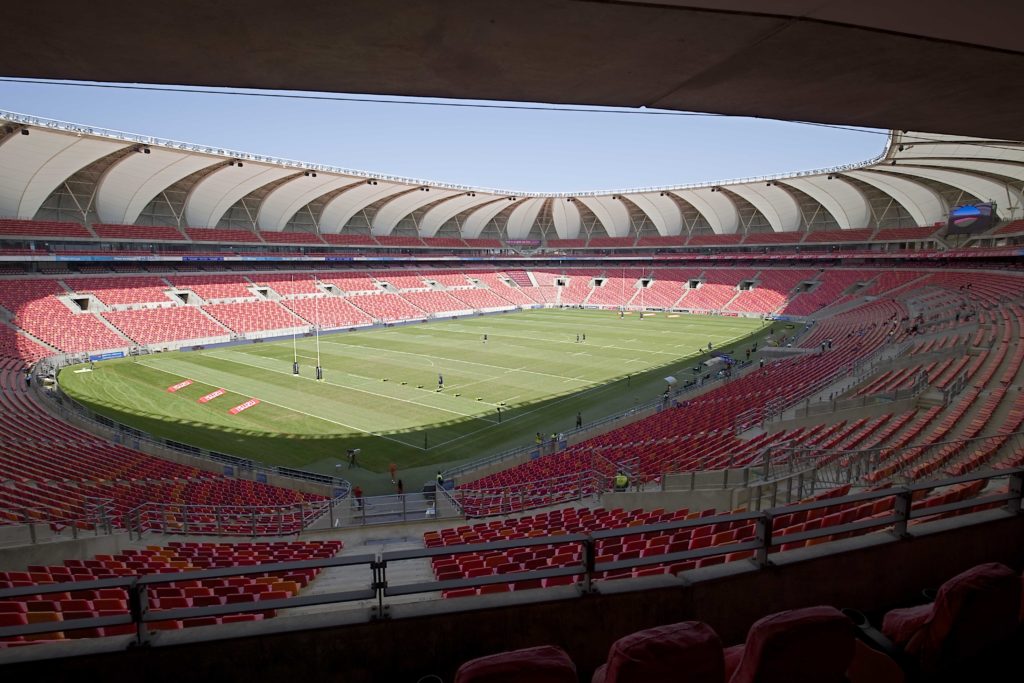Sport played without authentic crowd noise will take some getting used to, writes CRAIG LEWIS in the latest SA Rugby magazine.
READ: What’s in our latest issue?
The return of live sport, widely accompanied by the novel concept of simulated crowd noises at empty stadiums, has provided a surreal insight into the ‘new normal’ of the Covid-19 era.
By its very nature as a contact sport, rugby has needed to bide its time when it comes to restarting competition. New Zealand led the way with the start of Super Rugby Aotearoa in June, and also set another trend in becoming the first professional sports competition in the world to allow teams play to in front of fans during the global pandemic.
Fans duly filled the stadiums in the first rounds of competition, with a packed Eden Park particularly providing an electric atmosphere when the Blues took on the Hurricanes in their opener.
It was a memorable occasion made possible by New Zealand’s remarkable success in quelling the coronavirus outbreak, but elsewhere, the battle is far from won.
In Germany, the return of the Bundesliga was welcomed, but one of the biggest talking points was the broadcast offering for TV viewers to choose between live sound from the empty stadiums or a soundtrack of recorded fan chants. Alessandro Reitano, vice-president of sports production at Sky Germany, explained that the goal of the Bundesliga’s ‘enhanced audio’ was to ‘forget a little bit that you’re seeing an empty stadium’.
However, TV channels broadcasting the games internationally often picked a feed with fake noise, without offering their local viewers the choice.
Rugby league’s NRL has also made its comeback in Australia, where they opted for a ‘virtual crowd’ to accompany play rather than subject viewers to the eerie atmosphere created by empty stadiums.
Meanwhile, video games company EA Sports supplied similar crowd noise, drawn from its archive of recordings, for broadcasts of Spain’s La Liga and the English Premier League. The reaction from supporters and players was largely mixed, with the ebbs and flows of the noise attempting to closely simulate the intensity of the crowd to match the action in the game.
Yet, it was inevitably an experience vastly different and, well, ’fake’ compared to the real deal.
Of course the absence of fans was particularly noticeable on the football front, where English Premier League matches are renowned for their capacity crowds of faithful fans, who spend most of the match in full voice. How players can possibly lift their performance in the absence of this atmosphere is another debate altogether.
How this translates to a rugby context is also an interesting question. Yes, there have been the usual jokes doing the rounds that poke fun at a team like the Bulls, for example, suggesting they’d be used to playing in front of empty stadiums after the recent decline in crowd numbers. But on the more serious side, one has to wonder how compelling a clash can be when it’s played at a massive stadium devoid of any supporters.
Rugby is renowned for the crowd swell that accompanies the kick-off and the cheers that come with linebreaks, massive tackles or tries. Matches without that will be poorer for it, but the health and safety requirements for all are the overwhelming priority.
In a country such as South Africa, there have been talks that a domestic competition may be able to kick off in September, but there’s no chance fans would be able to pour into the stadiums, as was the case in New Zealand.
It’s believed local broadcasting giant SuperSport is looking at all options and will certainly consider the option of simulated crowd noise when South African rugby is able to launch its own competition.
One way or another, a surreal experience awaits fans whenever action is able to to resume. After an extended lockdown with no South African rugby to enjoy, there is no doubt sport fans will welcome whatever they can get, but for players and supporters, a period of real adjustment to a new stadium experience will be required.
*This article first appeared in the August issue of SA Rugby magazine – Subscribe here





